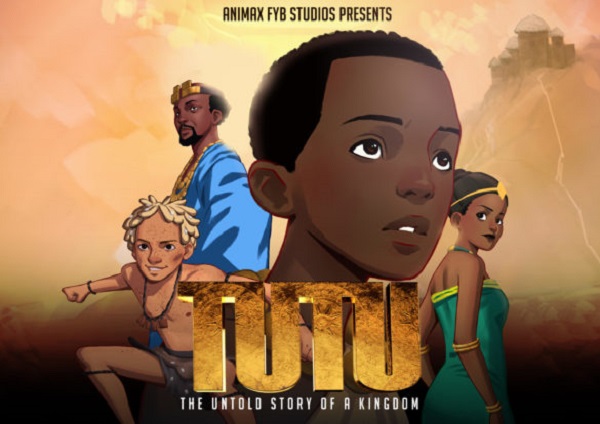At a popular amphi-theatre in Ghana’s capital Accra, hundreds gathered to watch the premiering of an animation film chronicling the history of one of Ghana’s most powerful and ancient kingdoms, the Ashanti Kingdom.
Titled ‘Tutu’, the story is told of how a future King of the Ashanti Kingdom, Osei Tutu the first, met a powerful traditional priest or magician called Okomfo Anokye.
The two struck a powerful bond and friendship that would eventually lead to the fortification of the Ashanti Kingdom for centuries until present day.
Out of this friendship led to the conjuring of the famous golden stool of the Ashanti Kingdom from the skies.
The man behind this animation film is Francis Brown who explained that adopting the historical incident in the form of animation was bringing a dream into reality.
“Looking at animation itself, it is such a green area and I find myself in this industry and all that I have been seeing for the past years has always been about other people’s story.
So I made it a point of mine to use animation to tell our own stories. The story of an African, an African story from an African perspective.”
Animation has become a popular tool for film makers across the world to tell stories.
Lack of African content
But largely many of these stories within the animation industry globally are dominated by western stories and fantasies.
In Ghana, there are young film makers now using animation to project the Ghanaian and African history and culture.
Brown is one of them, dedicating his talent to the animation films industry in Africa.
He is hoping to use this medium to produce enough materials about the African culture and heritage but says it hasn’t been an easy ride so far.
He said “The toughest challenge now as it stands is funding, resource to make it happen. Because as you can see Tutu is a periodic piece which means that it needs a lot of research, it needs a lot of resources to pull such project off the ground.
It is not a fantasy kind of story where we can easily just base it off with our own ideas or our own imagination, so it takes a lot of resource people to work with on this Tutu thing.”
Brown and his team despite funding challenges want to produce the Tutu film into a three season production with each season featuring thirteen episodes.
Script writer for the film, Yaw Frimpong Boakye spoke of how excited he was working on the project which he said will ultimately tell the African story.
“At time we forget as Africans that we have heroes that our ancestors did great things that should inspire us to do even more. Very often we think that if the white man is not doing something then we are not capable.
These are the kinds of stories that tell us that our forefathers did great things and therefore it is in us, within us that great things can be done and so we should continue to tell the African story where ever it is that it comes from and this is a typical example of it,” Boakye said.
Expectant audience
Many who came out to watch the premiering of Tutu animation film, couldn’t hide their joy.
Selma Korli said “We have been waiting for this for long because we always have to watch western stories on our TV set.
We have always wanted to watch our stories, our African stories because our kids are watching and there is no African stories, anytime they want to watch a cartoon it is all about western so this is a pacesetter.”
Brown has bigger plans for his passion of producing animation films.
“I would really love to see an African child to sit behind the screen and watch content that is directly related to them. And another thing to is animation, using animation to tell this story is also going to make a major statement in Africa especially in Ghana that it is possible to build a studio, an industry out of animation.”
Hopefully in the coming months the Tutu TV series would be on the screen somewhere in Africa and around the world telling the story of the Ashanti Kingdom in Ghana and largely about some aspects of the African cultural history.
Source: Africafeeds.com



